Chloroquine and inhibition of Toll-like receptor 9 protect from sepsis-induced acute kidney injury
- PMID: 18305095
- PMCID: PMC2386262
- DOI: 10.1152/ajprenal.00461.2007
Chloroquine and inhibition of Toll-like receptor 9 protect from sepsis-induced acute kidney injury
Abstract
Mortality from sepsis has remained high despite recent advances in supportive and targeted therapies. Toll-like receptors (TLRs) sense bacterial products and stimulate pathogenic innate immune responses. Mice deficient in the common adapter protein MyD88, downstream from most TLRs, have reduced mortality and acute kidney injury (AKI) from polymicrobial sepsis. However, the identity of the TLR(s) responsible for the host response to polymicrobial sepsis is unknown. Here, we show that chloroquine, an inhibitor of endocytic TLRs (TLR3, 7, 8, 9), improves sepsis-induced mortality and AKI in a clinically relevant polymicrobial sepsis mouse model, even when administered 6 h after the septic insult. Chloroquine administration attenuated the decline in renal function, splenic apoptosis, serum markers of damage to other organs, and prototypical serum pro- and anti-inflammatory cytokines TNF-alpha and IL-10. An oligodeoxynucleotide inhibitor (H154) of TLR9 and TLR9-deficient mice mirror the actions of chloroquine in all functional parameters that we tested. In addition, chloroquine decreased TLR9 protein abundance in spleen, further suggesting that TLR9 signaling may be a major target for the protective actions of chloroquine. Our findings indicate that chloroquine improves survival by inhibiting multiple pathways leading to polymicrobial sepsis and that chloroquine and TLR9 inhibitors represent viable broad-spectrum and targeted therapeutic strategies, respectively, that are promising candidates for further clinical development.
Figures
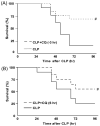
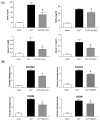
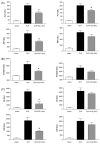
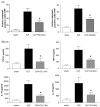
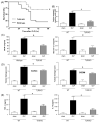
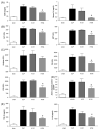
Similar articles
-
Small interfering RNA targeting Toll-like receptor 9 protects mice against polymicrobial septic acute kidney injury.Nephron Exp Nephrol. 2012;122(1-2):51-61. doi: 10.1159/000346953. Epub 2013 Mar 15. Nephron Exp Nephrol. 2012. PMID: 23548820
-
IL-17A activated by Toll-like receptor 9 contributes to the development of septic acute kidney injury.Am J Physiol Renal Physiol. 2020 Jan 1;318(1):F238-F247. doi: 10.1152/ajprenal.00313.2019. Epub 2019 Nov 25. Am J Physiol Renal Physiol. 2020. PMID: 31760767
-
Role of Mitochondrial DNA in Septic AKI via Toll-Like Receptor 9.J Am Soc Nephrol. 2016 Jul;27(7):2009-20. doi: 10.1681/ASN.2015040376. Epub 2015 Nov 16. J Am Soc Nephrol. 2016. PMID: 26574043 Free PMC article.
-
Inhibition of Toll-like receptor 9 attenuates sepsis-induced mortality through suppressing excessive inflammatory response.Cell Immunol. 2015 Jun;295(2):92-8. doi: 10.1016/j.cellimm.2015.03.009. Epub 2015 Mar 31. Cell Immunol. 2015. PMID: 25880099 Free PMC article.
-
Sepsis-induced organ failure is mediated by different pathways in the kidney and liver: acute renal failure is dependent on MyD88 but not renal cell apoptosis.Kidney Int. 2006 Mar;69(5):832-6. doi: 10.1038/sj.ki.5000165. Kidney Int. 2006. PMID: 16518342 Free PMC article.
Cited by
-
In vivo TLR9 inhibition attenuates CpG-induced myocardial dysfunction.Mediators Inflamm. 2013;2013:217297. doi: 10.1155/2013/217297. Epub 2013 Apr 10. Mediators Inflamm. 2013. PMID: 23690658 Free PMC article.
-
Pathophysiology of acute kidney injury.Compr Physiol. 2012 Apr;2(2):1303-53. doi: 10.1002/cphy.c110041. Compr Physiol. 2012. PMID: 23798302 Free PMC article. Review.
-
Physiological aspects of Toll-like receptor 4 activation in sepsis-induced acute kidney injury.Acta Physiol (Oxf). 2017 Mar;219(3):573-588. doi: 10.1111/apha.12798. Epub 2016 Oct 8. Acta Physiol (Oxf). 2017. PMID: 27602552 Free PMC article. Review.
-
IRF3 contributes to sepsis pathogenesis in the mouse cecal ligation and puncture model.J Leukoc Biol. 2012 Dec;92(6):1261-8. doi: 10.1189/jlb.0312138. Epub 2012 Oct 9. J Leukoc Biol. 2012. PMID: 23048204 Free PMC article.
-
Mitochondrial DNA: a proinflammatory 'enemy from within' during HIV infection?Cell Death Dis. 2012 May 10;3(5):307. doi: 10.1038/cddis.2012.47. Cell Death Dis. 2012. PMID: 22573036 Free PMC article. No abstract available.
References
-
- Ahmad-Nejad P, Hacker H, Rutz M, Bauer S, Vabulas RM, Wagner H. Bacterial CpG-DNA and lipopolysaccharides activate Toll-like receptors at distinct cellular compartments. European J Immunol. 2002;32:1958–1968. - PubMed
-
- Ahmed MH, Ashton N, Balment RJ. Renal function in a rat model of analgesic nephropathy: effect of chloroquine. J Pharmacol Exp Ther. 2003;305:123–130. - PubMed
-
- Ahmed MH, Ashton N, Balment RJ. The effect of chloroquine on renal function and vasopressin secretion: a nitric oxide-dependent effect. J Pharmacol Exp Ther. 2003;304:156–161. - PubMed
-
- Akira S, Takeda K. Toll-like receptor signalling. Nature Reviews. 2004;4:499–511. - PubMed
-
- Benigni A, Caroli C, Longaretti L, Gagliardini E, Zoja C, Galbusera M, Moioli D, Romagnani P, Tincani A, Andreoli L, Remuzzi G. Involvement of renal tubular Toll-like receptor 9 in the development of tubulointerstitial injury in systemic lupus. Arthritis and Rheumatism. 2007;56:1569–1578. - PubMed
Publication types
MeSH terms
Substances
Grants and funding
LinkOut - more resources
Full Text Sources
Other Literature Sources
Medical
Molecular Biology Databases

